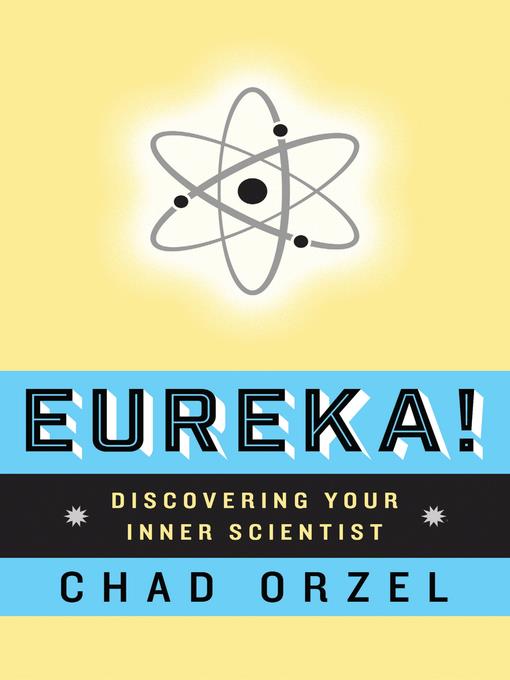
Eureka
Discovering Your Inner Scientist
کتاب های مرتبط
- اطلاعات
- نقد و بررسی
- دیدگاه کاربران
نقد و بررسی

Starred review from October 6, 2014
We all have an inner scientist, and Orzel, a professor of physics at Union College, says we put those inner scientists to work every day—whether we realize it or not. Orzel winnows down science to four basic steps: “Looking” involves collecting observations and searching for patterns,
as Darwin did to create his theory on the origin of species. “Thinking” means reviewing your data and coming up with
an explanation—a model—for what you’ve seen, the way Dmitri Mendeleev studied chemical properties of different substances to create the periodic table of the elements. “Testing” means devising experiments to test your model, as physicists did to determine what atoms are made of. “Telling” is sharing the story of your work with others. His vivid examples include pop culture touchstones Iron Chef and Where’s Waldo?, fantasy sports leagues, and the citizen-scientist organization Zooniverse. Orzel also enlivens the work with glimpses of fascinating scientists such as physicist Richard Feynman and astronomer Vera Rubin, whose work allowed scientists to deduce the presence of dark matter in galaxies. This fun, diverse, and accessible look at how science works will convert even the biggest science phobe. Agent: Erin Hosier, Dunow, Carlson, and Lerner.

November 1, 2014
Orzel (Physics/Union Coll.; How to Teach Relativity to Your Dog, 2012, etc.) explains that we all think like scientists, at least some of the time; we just may not know it.What is science? Most of all, writes the author, it is a process. Its many products may be bewildering, but its process is anything but inscrutable ("not some incidental offshoot of more general human activity; it's the very thing that makes us who we are"). In writing that is welcoming but not overly bouncy, persuasive in a careful way but also enticing, Orzel reveals the "process of looking at the world, figuring out how things work, testing that knowledge, and sharing it with others." In the first part of the book, the author looks for patterns. He uses the pleasures of collecting things as a way of polishing his awareness of the importance of close observation. The next step-using your experiences in life, the frame of what you know-allows you to fashion your observations into a model, which is not just a story as to why something happened, but a source of optimism, as well, since it provides a real notion that the world is comprehensible. With an easy hand, Orzel ties together card games with communicating in the laboratory; playing sports and learning how to test and refine; the details of some hard science-Rutherford's gold foil, Cavendish's lamps and magnets-and entertaining stories that disclose the process that leads from observation to colorful narrative. There will be false leads, dead ends and red herrings, but the beauty is in the chase and in the pleasing fact that the practice of science is open to all races, genders and persuasions. Orzel's point is well-taken: Like breathing, we are engaging in the scientific process much of the time, even if we don't know it.
COPYRIGHT(2014) Kirkus Reviews, ALL RIGHTS RESERVED.

October 15, 2014
Using story as illustration, Orzel (physics, Union Coll.; How To Teach Physics to Your Dog and How To Teach Relativity to Your Dog) contends that, whether they know it or not, ordinary people constantly act as scientists in their everyday lives. The author argues that people should not regard science as esoteric, exclusive, or inaccessible; rather, they should recognize that human beings naturally employ the scientific method when looking at the world, thinking of models to explain phenomena, testing theories, and telling others about discoveries. Orzel demonstrates the universality of science by pointing to examples of the scientific method at work in everything from baking to fantasy sports. He connects these examples to stories about scientists who have made important findings while asking questions about the weight of the earth, the properties of atoms, or the correct time at sea. Similar to Richard Rhodes or Dava Sobel, Orzel makes complicated scientific narratives accessible to lay readers. VERDICT Recommended for undergraduate students, science educators, and readers with an amateur interest in science or science history.--Talea Anderson, College Place, WA
Copyright 2014 Library Journal, LLC Used with permission.

























دیدگاه کاربران